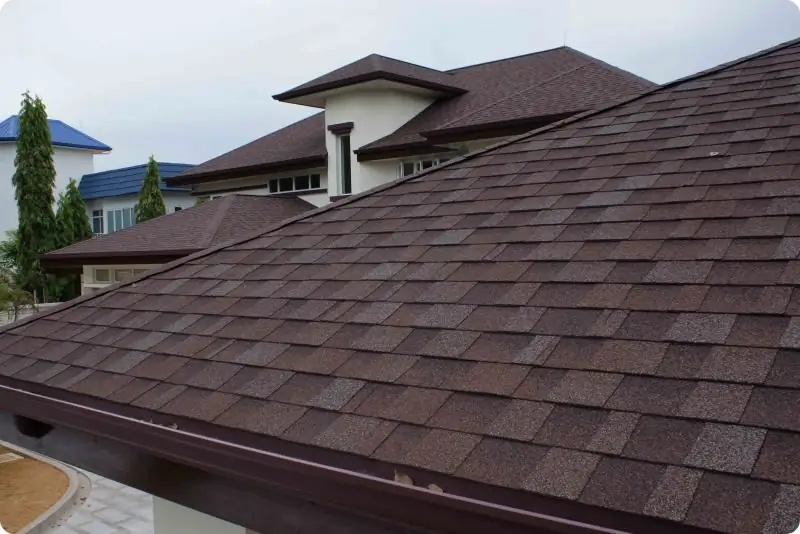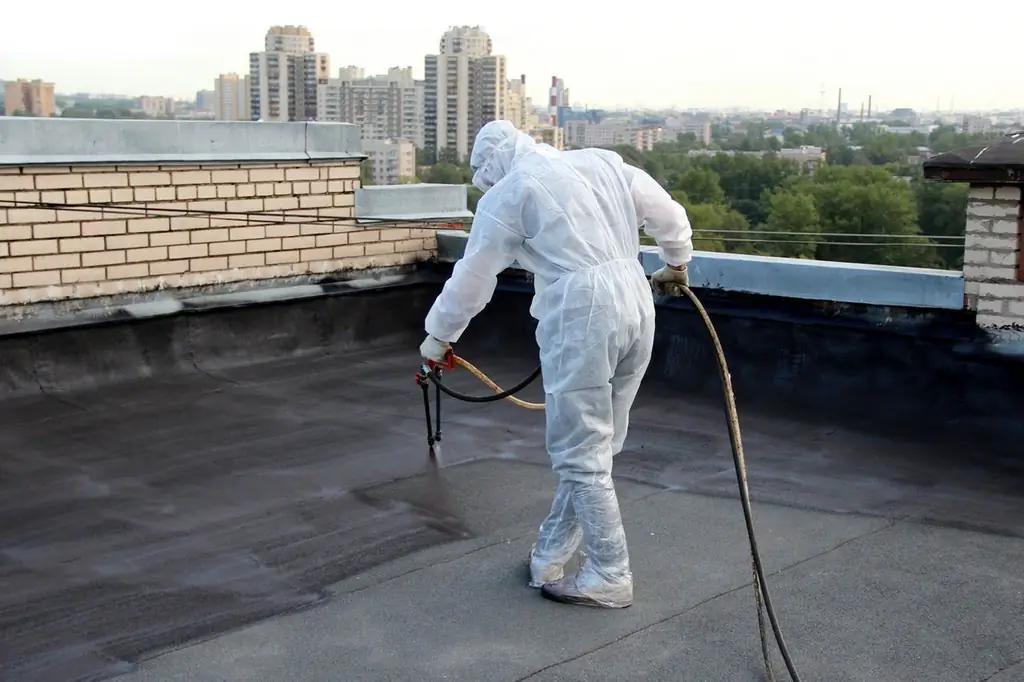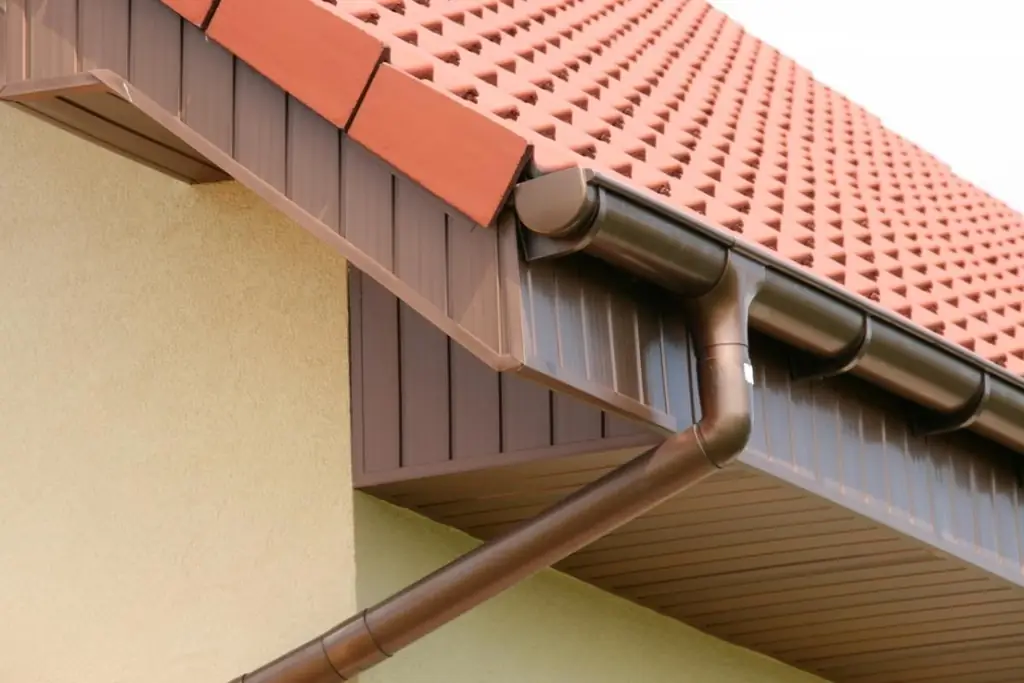
Table of contents:
- Author Bailey Albertson [email protected].
- Public 2023-12-17 12:53.
- Last modified 2025-06-01 07:32.
Endova roof: purpose, use cases, installation features

Thanks to the roofing structure, any residential building or office building is reliably protected from negative climatic factors, and also takes on the appearance of a completed architectural structure with a special design. The roof is a complex building unit, it is assembled from a large number of elements, among which much attention is paid to the valley system.
Content
- 1 Description and features of the valley
-
2 What you need to know when building a valley
- 2.1 Differences between the lower and upper valleys
- 2.2 Description of the main types of valleys
- 3 Choosing the material of the valley
-
4 Installation of a roof valley with different roofing
-
4.1 Installation of the valley under the metal tile
4.1.1 Video: the internal structure of the valley under the metal tile
-
4.2 Installing a roof valley with flexible roofing materials
- 4.2.1 Open method of valley installation
- 4.2.2 Video: installation of a soft roof valley
- 4.2.3 Features of "undercut" installation of the valley
- 4.3 Construction of a valley on a folded roof
-
4.4 Arrangement of the valley strip with corrugated board
4.4.1 Video: bottom valley for corrugated board
- 4.5 Installing a roof valley with slate
-
Description and features of the valley
Endova is a corner strip that connects two roof slopes. The main task of this element is to ensure the timely removal of moisture from the roofing. In principle, the valley is similar to a gutter for water drainage. The device of the valley requires high professionalism and correct execution, because it is exposed to loads from strong gusts of wind, snow cover, and a large flow of water during thaws or downpours. To avoid breaking the roofing, sagging the structure and leaking the roof, it is important to follow the technology of the valley device.

Endova is a corner gutter for draining water from the junction of two roof slopes
What you need to know when building a valley
Valleys are usually made of metal, the best option is considered to be the use of a product made of galvanized steel, which ensures long-term operation of the corner element and the entire roof as a whole.
Differences between the lower and upper valleys
The roof junction of the slopes consists of two strips - the lower and upper valleys. In places where negative butt corners are formed, a lower bar is placed in order to reliably close the under-roof space and prevent water from entering the area of junction of the pitched surfaces. Installation of the lower valley is carried out until the roof is covered with roofing material. The upper valley acts as a decorative element that is attached over the roof.

The lower valley protects the junction of two slopes from water ingress
Description of the main types of valleys
Depending on the connection of the roof slope panels, the valley can be:
- open;
- closed;
- intertwined (articulated).
A closed valley assumes end-to-end connection of roofing panels, the name of the interwoven one speaks for itself - here the roofing structures are intertwined. Both valleys work well with steep roof slopes.

When installing an intertwined valley, the elements of the roofing at the junction go under each other
When choosing a type of structural unit, an important role is played not only by the slope of the roof, but also by the type of coverage to be selected. So, closed and articulated planks need an additional waterproofing layer, which is not required when arranging an open valley, when precipitation does not accumulate, but quickly leaves the roof. The open unit is equipped with the usual waterproofing used in the construction of the pitched structure.
The choice of the material of the valley
When choosing a valley, developers are guided by what kind of coating will be installed on the roof. If the roof is covered with metal, then a valley made of decorative roofing iron is sufficient. In order to save money, many homeowners prefer to purchase additional elements from conventional galvanized, not paying attention to their colors. A few years ago, no particular importance was attached to this issue, but now most experts strongly advise purchasing metal sheets with a high-quality polymer coating in the color of the main material for assembling end strips.

In most modern buildings, valleys are matched to the color of the main roofing material.
Advantages of installing polymer-treated sheets:
- high strength of the product, ensuring long-term operation;
- protection of the valley, which is the weakest part of the roof, from the corrosive effects of water.
The only positive factor in the use of untreated galvanized sheet is the lower price despite the fact that the elements are hidden under the tiles and are visually invisible.
It is rather difficult to change the elements of the valley, since this requires a complete disassembly of the roof slopes. The implementation of the procedure also involves large financial costs, which are due to the need not only to assemble and disassemble the roof and replace the valley, but also to restore the interior decoration of the premises.
In short, it will be much more practical and cheaper to install a steel valley with polymer treatment.
Basic rules for choosing material:
- Roof slope joints are the weakest parts of the roof and should be covered with high quality materials.
- Endovas should be an order of magnitude stronger than roofing.
- If the roof is fitted with a polyester coated material, the valleys should be made of metal with a polyurethane layer.
Installation of a roof valley with different roofing
Depending on what kind of finishing coating will be used, the features of the installation of the valley structure are determined.
Installation of the valley under the metal tile
All work is carried out in several stages and requires a high-quality arrangement of a waterproofing layer with channels for water to escape along the sheathing system.
-
Reliable fastening of the valley is ensured by installing a solid crate at the junction. The planks in the required quantity are attached along the line of the valley installation with a margin of 20-30 cm in width.

Lathing for the valley Valley planks are laid on a solid lathing substrate
- The lower valley is cut so that the cornice is higher than it, after which only the flanging along the cornice line will remain.
- Then, the end elements are installed along the flange, and a universal seal is placed in the place where the ridge is formed.
-
The metal tile should be cut so that the centerline of the valley on each side does not reach about 6-10 cm to cover.

Trimming metal tiles in the valley Roofing sheets are trimmed along the joint line, leaving a gap of 6-10 cm
- To fix the metal tile after trimming, the self-tapping screws are screwed into the already marked places, but with an indent of 10-15 cm from the stamping and 25 cm from the valley axis. Fasteners passing through the metal roof and the valley strip ensure reliable clamping of materials at the junction. If the screws are not screwed into the regular places, then the roofing sheet and valley may lie with a gap, which will become a source of leaks.
- The decorative elements of the upper valley are installed and fixed at the upper points of the adjacent covering sheets.
Thanks to the elements of the valley, the sections of the roofing sheets are hermetically closed, much less snow will blow out. All water flows down the slopes and ridge structures, goes through the cover plate and is removed from the roof along the main valley structure. In case of falling leaves and branches, the size of the gap between the outermost sheets of the coating plays an important role. If the installation requirements are met, all debris will be washed off with a stream of water.

Correct installation of the valley reliably protects the joints of the roof slopes from snow and water
Video: the internal structure of the valley under the metal tile
Installation of a roof valley with flexible roofing materials
The structure of the roof with a soft covering requires a special technology. Endova can be installed by "undercut" or open method, and in each case the preparation of the base will be different.
Open method of valley installation
The sequence of work is as follows:
-
The end carpet is mounted on a backing layer with a horizontal offset of 2-3 cm. Bitumen mastic is applied to the back of the structure with a layer of at least 10 cm wide. From above, the elements are nailed on nails every 25 cm, retreating from the edge about 3 cm.

Soft roof valley nodes On a roof made of flexible materials, the valley is mounted on a backing layer
- Installation of roofing material is performed along the top of the valley to its axis, while each shingle of the material laid on the valley should be fastened with nails so that the fasteners fall on the corner of the sheet and are not closer than 30 cm from the axis of the valley.
- As soon as the shingles are ready, the flexible shingles are trimmed according to the pre-made basting with a lanyard cord.
-
A plank will help to avoid accidental damage to the waterproofing layer, which must be placed under the shingle during cutting.

Trimming soft roofs In order not to damage the lining, a regular board should be placed under the bituminous shingles.
- Bituminous mastic and an adhesive base are applied to the shingle cut, after which the roofing element is laid and fastened.
The gutter can be about 5-15 cm wide. In the presence of a large number of trees near the house, it is more expedient to make it as wide as possible, then the leaves can be easily removed with water.

If the valley is made wide, the leaves and branches of trees will be washed off the roof with streams of rainwater.
Video: installation of a soft roof valley
Features of "undercut" installation of the valley
A roof with a soft roofing can be built with a closed valley, then a gentle slope is covered with ordinary tiles with a shingle overlay on top of a steep slope from 30 cm:
- All the shingles in the upper corners are punched with nails.
- Ordinary tiles are laid over the entire surface of the steep slope, after which the material is cut with an offset from the central valley axis by 8-10 cm.
- Once all the upper shingles have been cut, the material is held together at the edges with bitumen mastic.
This method of installation contributes to the displacement of the valley to a smaller slope, which serves as protection against water washout of the pitched surface.
Construction of a valley on a folded roof
Work is carried out only from the lower valley, taking into account a number of requirements:
-
Self-drilling, galvanized flat head screws are used for fastening.

Self Drilling Flat Head Screw When using special screws with a drill at the end, preliminary preparation of holes in the metal is not required
- The edge of the valley is fixed - as close as possible to the bend of the element.
- When laying, the upper valleys are put on top of the lower ones by at least 20 cm.
-
The plank of the valley is covered with a sealant with an indentation of 10 cm from the inner fold, after which sheets of covering are laid on it, which are tightened with the valley screws.

Seam roof with valley Seam roof sheets are laid on top of the valley and pulled together with self-tapping screws
Arrangement of the end strip with corrugated board
After completing the construction of the rafter system and checking the strength of all its fasteners, you can proceed to the installation of the valley:
- To create a continuous lathing, additional wooden blocks are attached at the installation site of the valley, and another layer of waterproofing is also laid.
-
The roofing membrane of the valley is covered from above with a waterproofing tape 10 cm wider than the lower valley strip. In some cases, developers use self-adhesive waterproofing tapes, but it is much easier and more economical to nail the valley with nails to the already prepared crate.

Installation diagram of the crate for the valley At the junction of the slopes, a continuous crate and an additional layer of waterproofing are laid
- Next, the lower valley element is installed in the formed gable roof joint. Experts recommend that in case of a small angle of inclination of the roof from the profiled sheet, give preference to the increased bar. So, the width of the usual valley plank in one direction is 30 cm, while on flat roofs it is made 2 times larger.
-
The valley starts with measuring the length of the internal joints. Trimming of the lower elements is carried out taking into account that they overlap each other by 15-20 cm. With a slight roof slope, the overlap should be increased.

Installation diagram of the valley on the roof made of corrugated board The scheme of laying a valley on a roof made of corrugated board practically does not differ from a similar procedure for a metal roofing
- Installation is carried out from the bottom of the roof, and all subsequent strips are laid on top of the previous element. The lower valley is mounted in front of the corrugated board fastening. At the same time, the roof covering should be inserted into the valley structure with an indent from its axis by 5 cm.
- As soon as the profiled sheets are fixed, you can proceed to the construction of the upper valley. It is used more as a decorative part that allows you to close the sheets at the edges where they are cut.
-
The method of attaching the valley to the profiled sheet is of great importance. In terms of dimensions, the lower bar is somewhat wider than the upper one, and with through fastening of the structure to the battens of the crate, the tightness of the lower valley may be broken. To preserve the integrity of the elements when installing the valley to the corrugated board, it is recommended to use rivets.

Upper valley on the roof made of corrugated board The upper valley is mostly decorative.
Video: bottom valley for corrugated board
Installing a roof valley with slate
The sequence of installation when covering the roof with slate does not generally differ from work using other roofing materials:
- First, a solid wooden crate with a layer of waterproofing is equipped, for which roofing material or a hydro-barrier is well suited.
-
Further, valleys made of sheet metal roofing are installed (it is better to opt for galvanized sheets).

Installation diagram of the valley under the slate Steel valleys are usually installed on slate roofs
- Slate is laid on top of the metal strips with trimming the edges to form the most even joint.
- Outside metal strips are mounted on top of the slate coating in places of pitched joints. In some cases, it is allowed to install a valley without decorative trim using the upper bar, but this is fraught not only with a deterioration in the appearance of the roof, but also with a decrease in its operational properties. The structure will be exposed to moisture, which will penetrate the roofing cake.
Compliance with the advice offered by specialists when performing roofing work will help you independently install a valley on a roof with any coating. Lack of necessary skills and ignorance of the specifics of performing each stage of installation can not only complicate the whole process, but also lead to unnecessary costs and errors. For those who do not have experience in performing such work, highly qualified developers will help to cope with the installation of the valley in a short time with a guarantee of flawless operation for a long time.
Recommended:
Roofing Cake For A Soft Roof, As Well As The Features Of Its Structure And Installation, Depending On The Type Of Roof And The Purpose Of The Room

What is a cake under a soft roof. Features of its device and installation. How to arrange a roofing cake from roll and piece materials
Roof Waterproofing And Its Types, As Well As Features Of Its Design And Installation, Depending On The Roofing Material

What materials can be used to arrange reliable waterproofing of the roof and how to install it
Metal Roof Cornice, Its Structure And Purpose, As Well As Design And Installation Features

Purpose of the eaves of the roof. The device and size, calculation methods and step-by-step installation of the eaves for a metal roof. Reviews of experienced builders
Roof Drip, Its Structure And Purpose, As Well As Calculation And Installation Features

What are roof drippers and how they differ from eaves. Is it obligatory to install drippers. Device and installation
Roof Ridge, Its Types And Purpose, As Well As Calculation And Installation Features

The correct choice of the ridge for the roof, the calculation of its location and the methods of correct installation. Ventilation device for the ridge space
